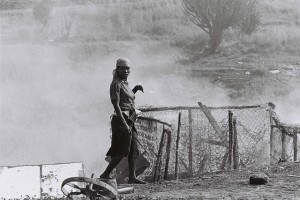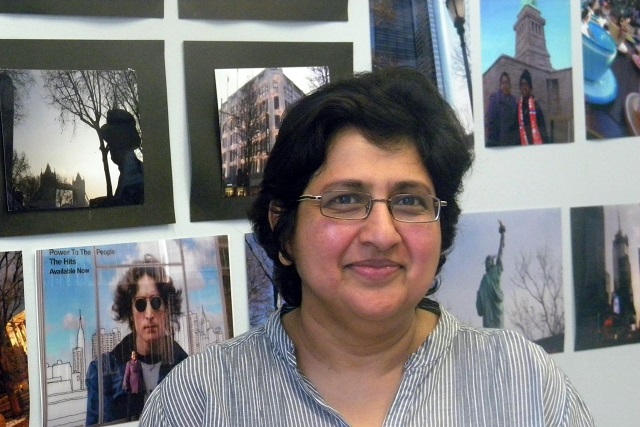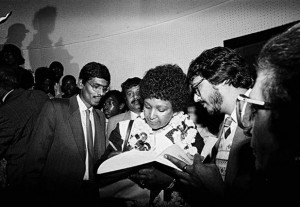DUT’s Journalism Lecturer, Deseni Soobben, will showcase some of her photographs taken during the apartheid era at the Nelson Mandela Foundation Exhibition which takes place during mid September (2015).
The exhibition: Between States of Emergency will feature South African photographers who were behind the lens from between 21 July 1985 and 7 June 1990: the period of the two states of emergency, as a token of appreciation for exposing apartheid and the resistance against it. “It’s important to be part of the exhibition as these photos are of historical significance. Sometimes as photographers, we become blasé about our work and it takes somebody else to appreciate your work and look at it as a valuable and historical contribution,” said Soobeen.
Soobben graduated in Photography at the former Natal Technikon (now DUT) thereafter contributing to Afrapix. She has photographed trade union gatherings, End Conscription Campaign meetings as well as funerals of anti-apartheid activists, to name but a few. She has worked for City Press, one of South Africa’s most respected media brands, for three years, covering vast areas of KwaZulu-Natal. She has been lecturing at DUT from 1995. She holds an MA from the University of KwaZulu-Natal and is currently studying towards her PhD at UKZN.

For the exhibition, each photographer was required to submit two of their photos. For Soobben, this was a crucial choice. “I chose the photo of the South African Police captain escorting a police casspir in Phoenix. It was at the time of the Inanda riots in September 1985. Many Indian people living and farming in Inanda (neighbouring Phoenix) had to abandon their homes. The second picture was of a small gathering of women singing at ‘Goldfinger’s’ funeral in KwaNdengezi on 9 January 1988. Men went down to the burial site and women sat at the top of the hill.
As this photo was taken during the State of Emergency, we were nervous as journalists and photographers were barred from entering the townships. Christina Scott (who at the time was at Concord, a news agency) and I were covering the story. The South African Police Force (SADF) spotted us as we were about to leave. As the casspir approached, Christina asked me to step away. Christina was questioned at length and threatened with imprisonment. I was terrified, not knowing if she was going to be taken away. Thank goodness she talked her way out of it,” added Soobben.
She names the launch of the UDF in February 1985 as one of the most significant events she has covered and photographed. “We had two of the greatest orators present: Bishop Tutu and Rev Allan Boesak. Bishop Tutu’s speech was electrifying. He inspired his audience and there was hope in the newly launched anti-apartheid struggle movement called the UDF. During the State of Emergency, Bishop Tutu was not allowed to be quoted in the media. Reverend Allan Boesak whipped up the emotions of the audience that evening. He was also not allowed to be quoted in the media during that time,” she said.
The exhibition will run for approximately three months before travelling around South Africa.
– Waheeda Peters
Pictured: Deseni Soobben and examples of some of her photographs taken during the apartheid era.



